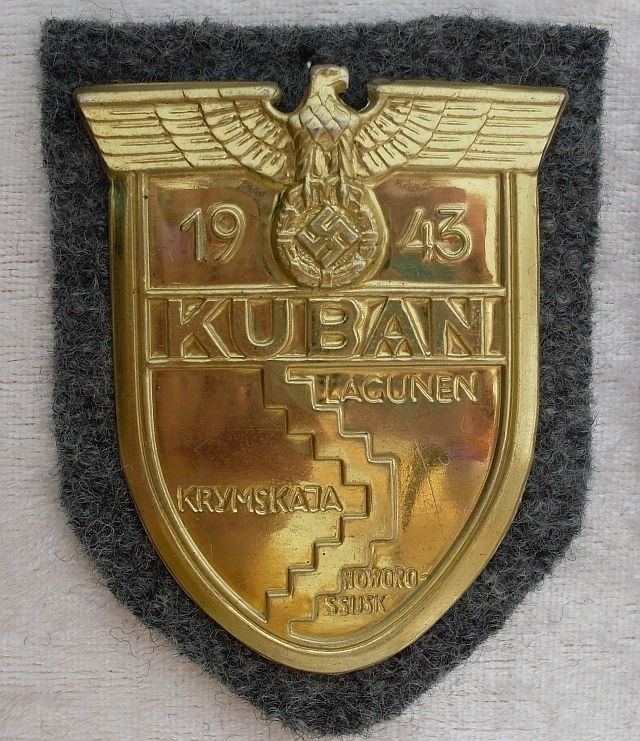Established 21 September 1943 | Eligibility Military personnel Status Obsolete | |
 | ||
Awarded for fighting at the Kuban bridgehead between February and October 1943 | ||
The Kuban Shield (German: Ärmelschild Kuban) was a World War II military decoration of Nazi Germany, awarded to those who fought at the Kuban bridgehead in the Soviet Union from February 1943 until it was abandoned in October 1943. The award was instituted on 21 September 1943.
Contents
Design
The shield is designed in a similar fashion to the Crimea Shield and was struck in sheet metal or zinc and treated with a bronzed wash. It features a German eagle with outstretched wings clutching a laurel wreath with a swastika. On each side the wreath are the numbers 19 and 43. Directly below the eagle is written KUBAN in block capital letters. Below this name is a stylized map of the Kuban region, with a line representing the defensive line that the men fought to preserve with the location of the bridgeheads - KRYMSKAJA, LAGUNEN, and NOWOROSSIJSK.
The shield was worn on the upper left sleeve of the tunic. A back plate, which held in place a piece of cloth matching the recipients’ branch of service, was applied to the shield:
Criteria for award
The criteria for award of the shield to military personnel:
